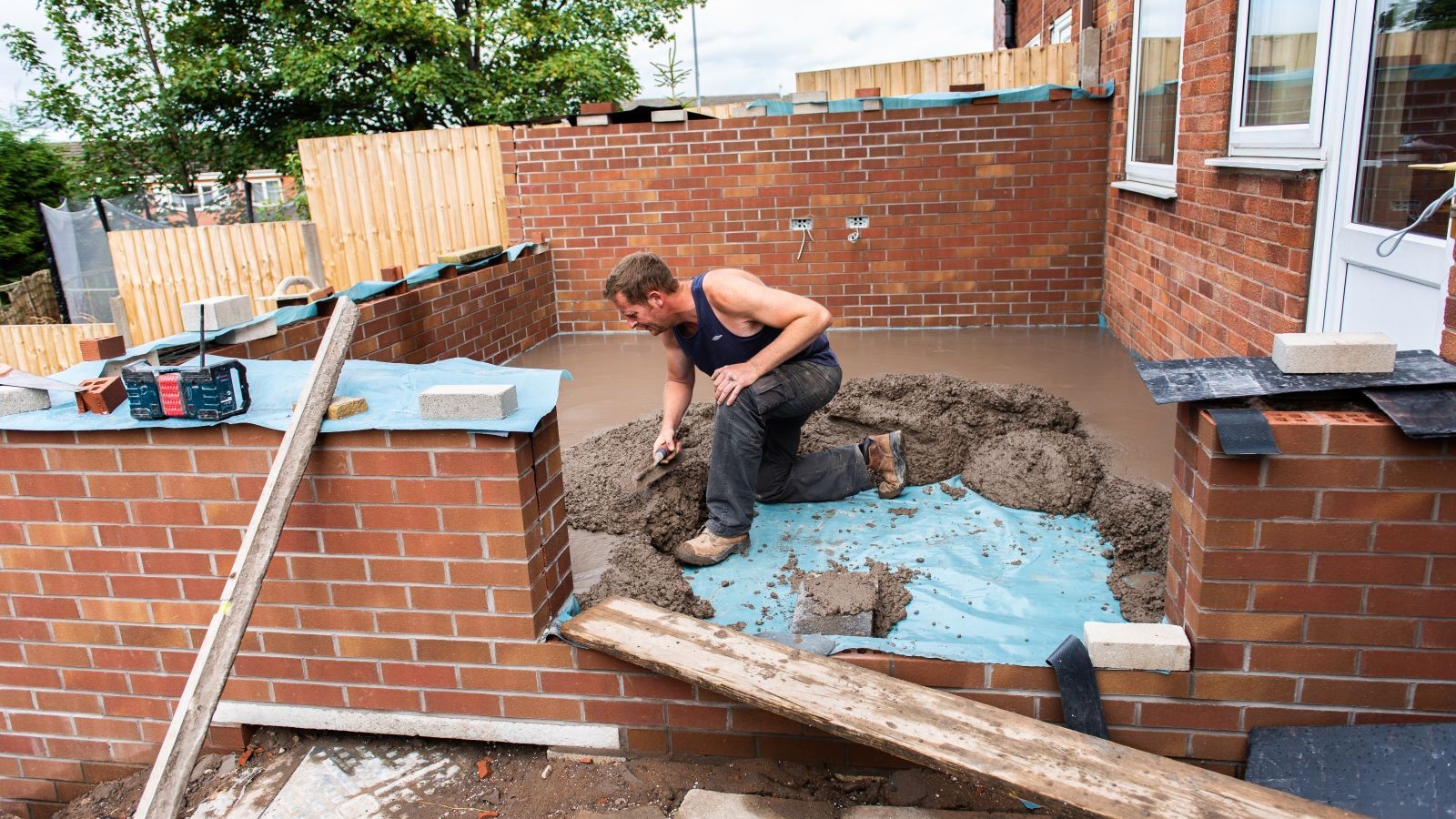Want your extension and garden to work in harmony? Here's what the experts advise
The design of your extension needs to take into account your garden and vice versa if you want the two to work together – as our expert guide explains
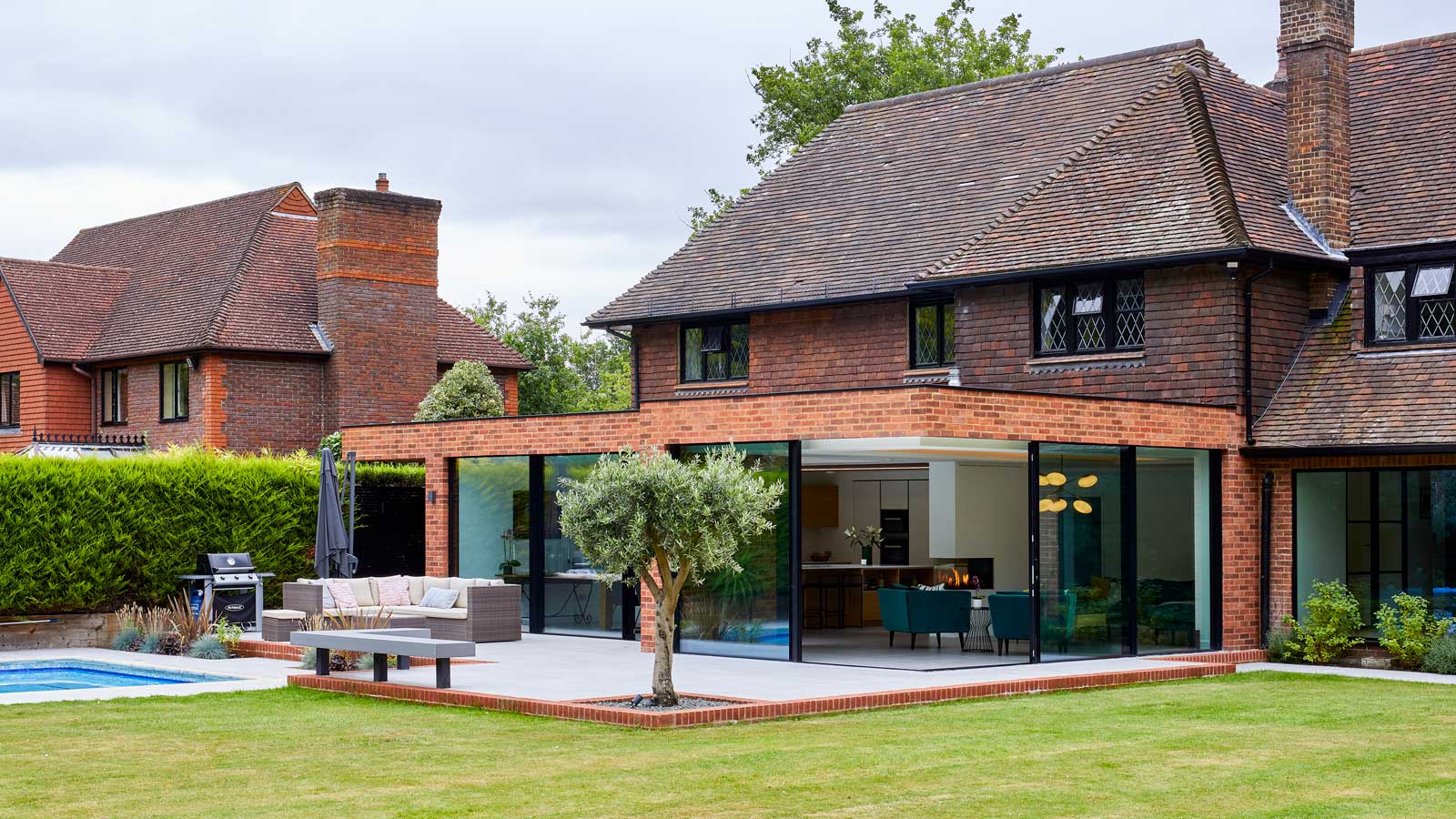
You may not have given too much thought to making your extension work with your garden, instead focussing on the extra space you will be gaining internally. But failing to ensure each does justice to the other is a missed opportunity.
While building an extension is a project primarily undertaken to expand a property and add rooms, it needs to be designed in a holistic way that means its design, both inside and out, make the very most of and enhance your external spaces.
"Adding an extension offers an excellent opportunity to reconsider how the property connects to the garden, enhancing the look and feel of a home as well as how you live within it," says Neil Gaskin, director at Sketch Architects.
With that in mind, we reached out to the experts for their advice on the best ways to build an extension that sits in harmony with your garden.

Neil is interested in how the fine detailing of design can really elevate a building, to create an exceptional home. He has specialised in residential architecture, working on projects ranging from one-off houses to large scale masterplans for housing developments of 1,000 units and more.
1. Aim for a seamless connection
Any house extension ideas should always be designed with the garden in mind, otherwise you risk them jarring with your surroundings. Ideally, you want the two elements to blend in a visually coherent way.
"The connection between a house and its garden goes beyond mere visual appeal. It is about creating a seamless transition between indoor and outdoor spaces, where the boundaries blur and the garden becomes an integral extension of the living area," explains Simon Drayson, director at George & James Architects. "This relationship influences how a home feels, how it is used, and how it interacts with its natural surroundings."
Neil Gaskin goes on to explain the best ways of creating this seamless effect.
"Creating a consistent floor level from the interior to the garden terrace can reduce a sense of difference," says Neil. "This can be further enhanced by installing any opening glazing with a fully recessed bottom fixing base track to have a totally step free link. This blurs the sense of boundary between home and garden."
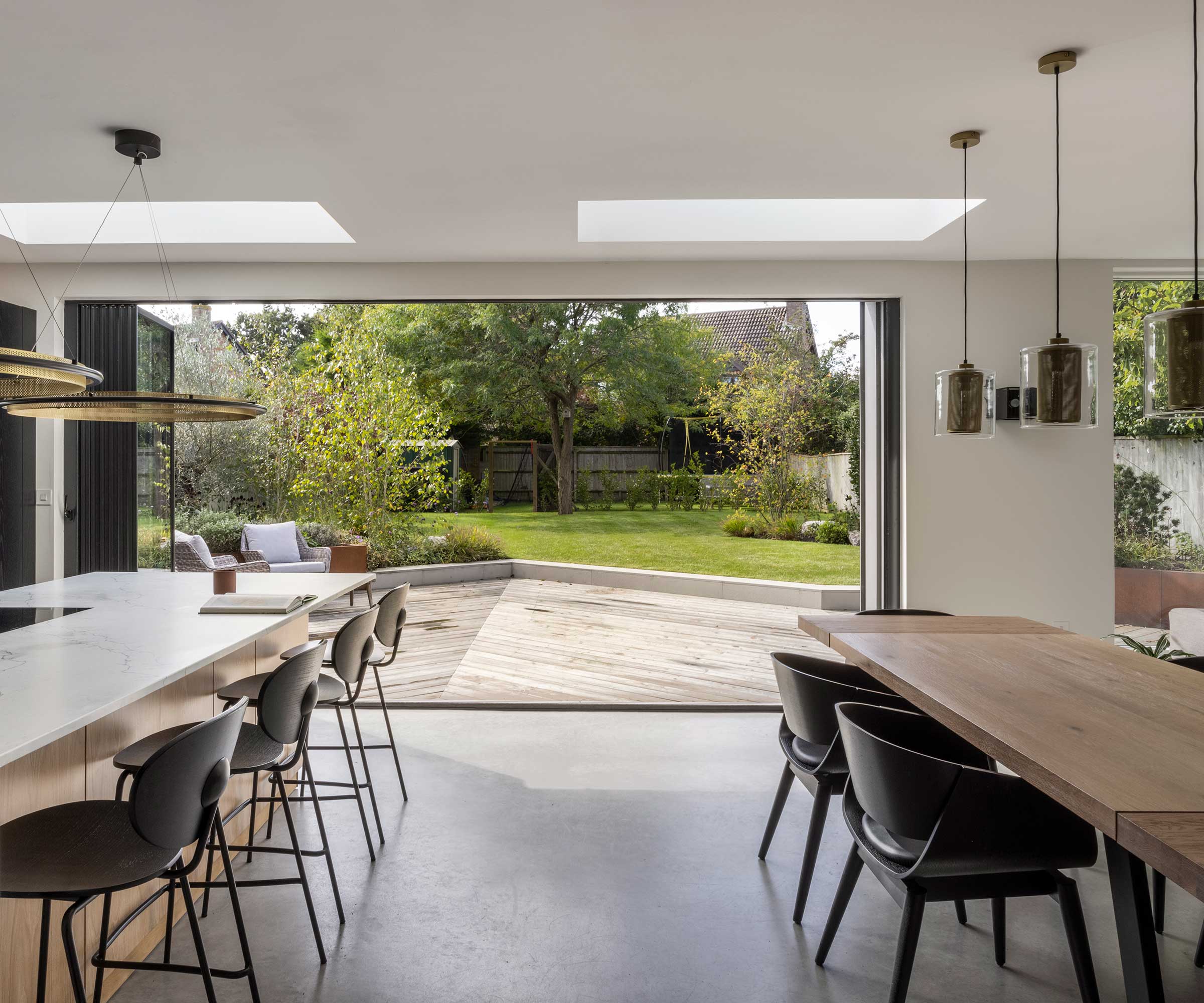

When architect Simon Drayson founded George & James Architects with Darren Leach they embodied the perfect combination of skills and interests, with Simon bringing more emotional intelligence and Darren more logic and analytical thinking. Simon has worked on his fair share of high-profile urban projects over the years, but upping sticks and going it alone definitely ranks as one of the best decisions of his life.
2. Align the garden with the house
Building an extension on a sloping site is not uncommon and, in many cases, the extension will sit lower or higher than the garden. In order to unite the two, therefore, this level change needs to be addressed. This might mean undertaking some excavation work.
George & James Architects designed the extension below carefully to enhance the connection between the inside and outside spaces, as Simon Drayson explains.
"A new terrace was carefully carved into the landscape, aligning it with the interior floor level," he says.
"The garden terrace is carefully designed with dedicated outdoor kitchen, BBQ and preparation area, strategically positioned adjacent to the indoor kitchen so it can easily be used as an extension to this space in the warmer months."
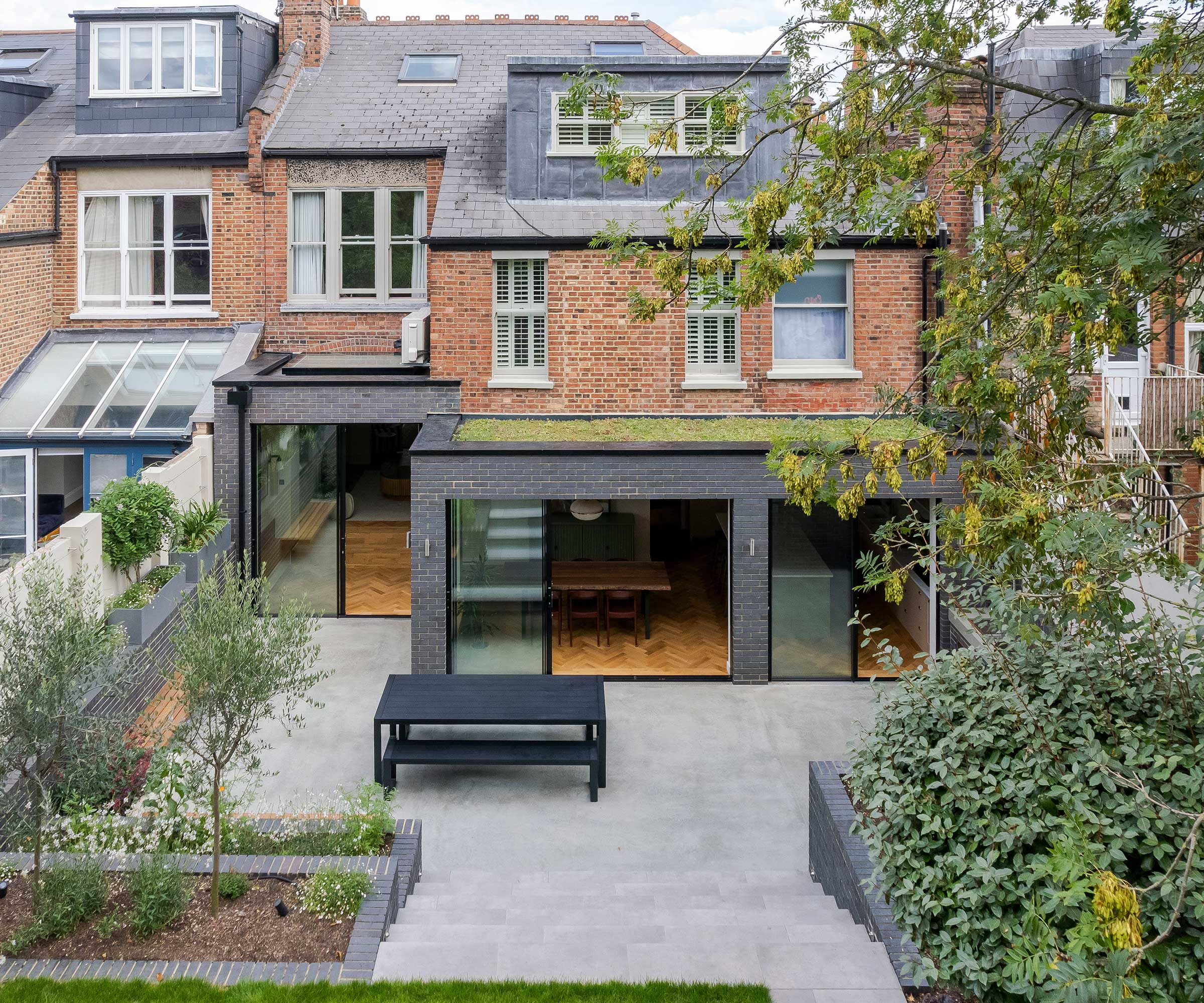
3. Tie flooring together as one
One of the most effective ways of bringing an extension and the garden together, both physically and visually, is to use the same flooring material for both.
"Selecting a single material for the flooring that extends from the inside out to the garden terrace can work to visually connect the two zones, making the areas feel like a cohesive whole," explains Neil Gaskin.
If this is something you are keen to implement, when choosing patio doors, be sure to speak to your installer about how you can create a level threshold that remains watertight. This will add to the united appearance.
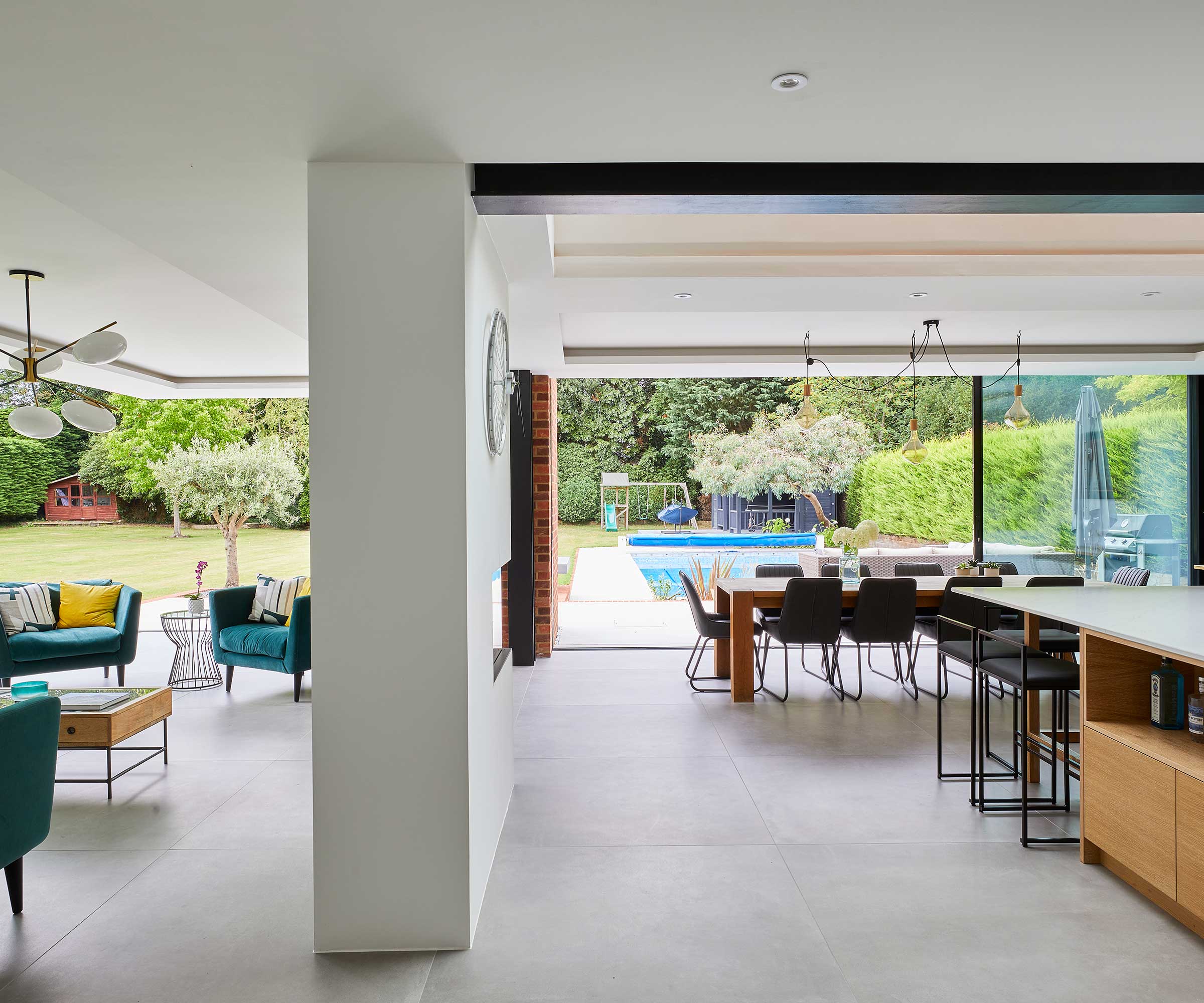
4. Match landscaping materials to your extension
By considering the materials you use within your extension design when it comes to your garden landscaping ideas, you will ensure the two complement one another perfectly.
"Carefully selecting the materials used in the construction brings the design of the house and gardens even closer together," says Simon Drayson.
It might be that you use the same style or colour of bricks that have been used to clad your extension for your paving or any retaining walls, or mirror materials on garden rooms or structures.
For the project below, Simon Drayson explained that handmade Petersen Tegl bricks have been used throughout, ensuring the hardscaping in the garden feels like a natural extension of the home’s architecture.
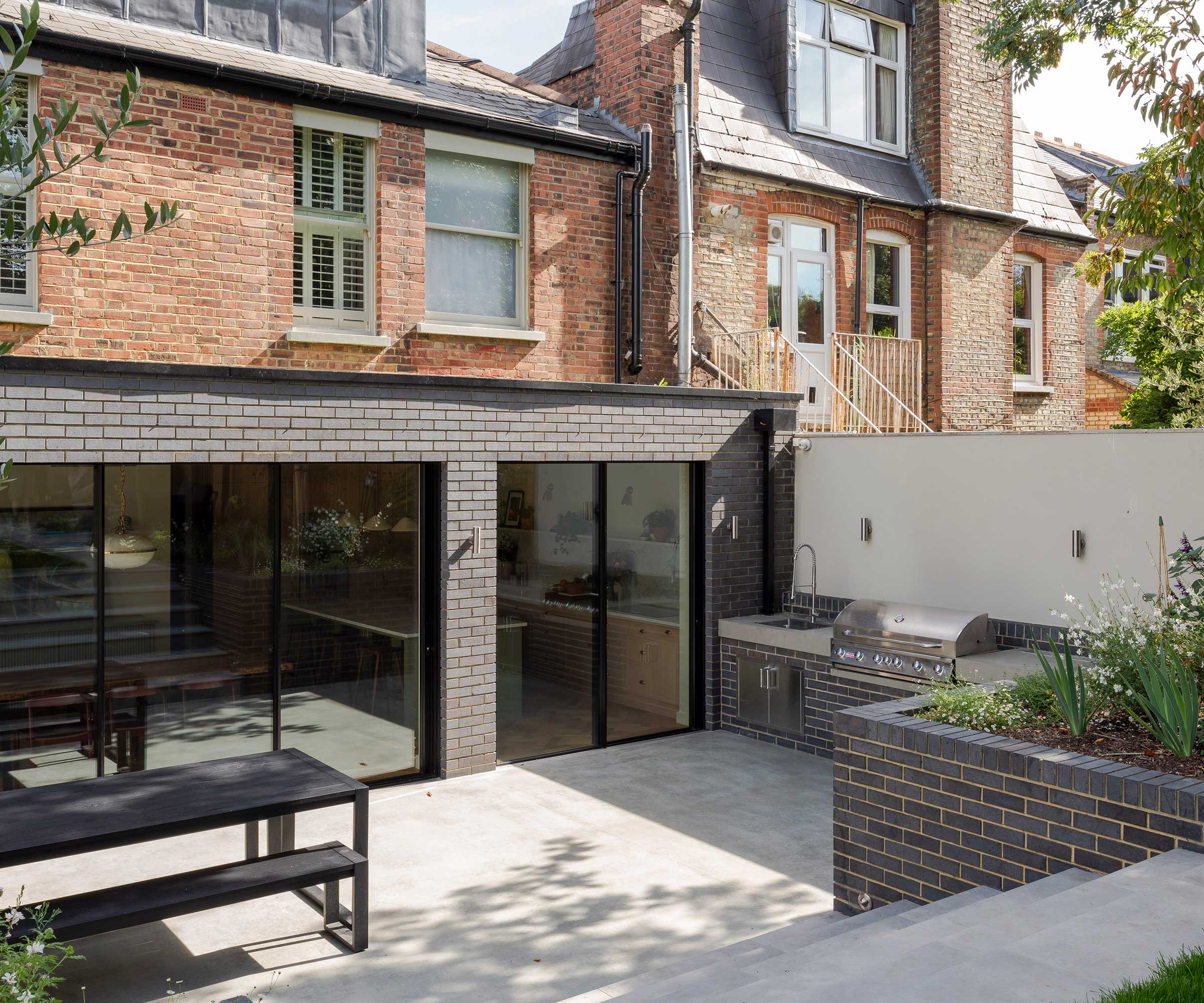
5. Prioritise glazing placement
The role that your choice of windows and doors will play in the way that your extension and garden interact with one another cannot be overestimated.
"Glazing placement is a hugely important way to physically and visually connect a home to the garden," says Neil Gaskin. "Strategically positioned, expansive openings invite the outdoors in."
Both sliding and bifold doors are brilliant ways to physically open an extension out into the garden, but don't discount the effect fixed glazing, such as picture windows, can have on fostering a connection too.
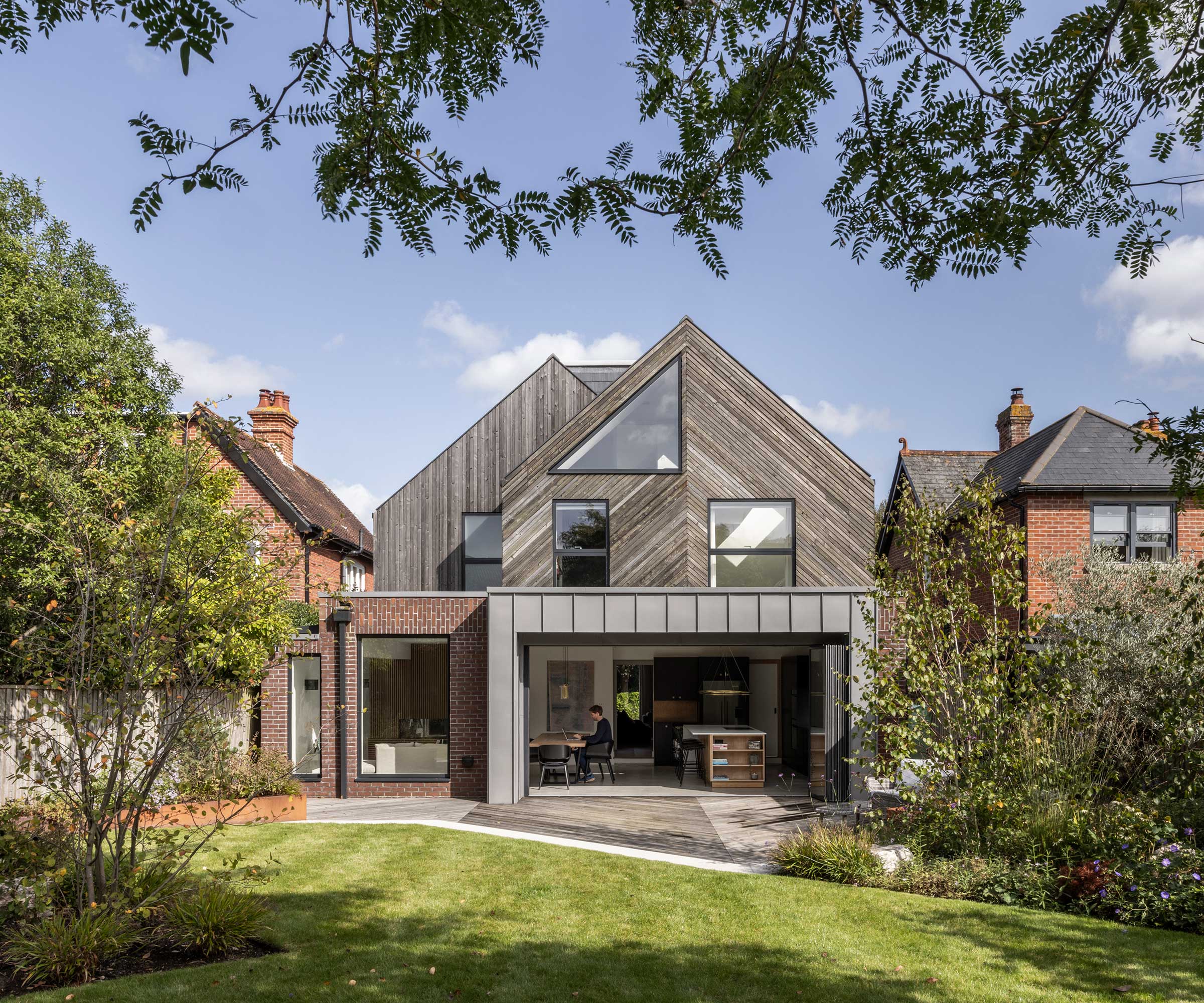
6. Consider remodelling existing spaces
Extensions always need to be designed with existing spaces in mind, benefitting the original 'host' building rather than causing it to play second fiddle to the new addition. This might mean that they are formulated in a way that pulls more light into previously dark spaces, or that they make the flow of movement between rooms freer.
However, the arrangement of the existing layout and its integration into the extension can also make or break how well it works with the garden.
Don't be afraid to explore the opportunity for knocking down internal walls in order to improve the relationship between the interior and exterior spaces.
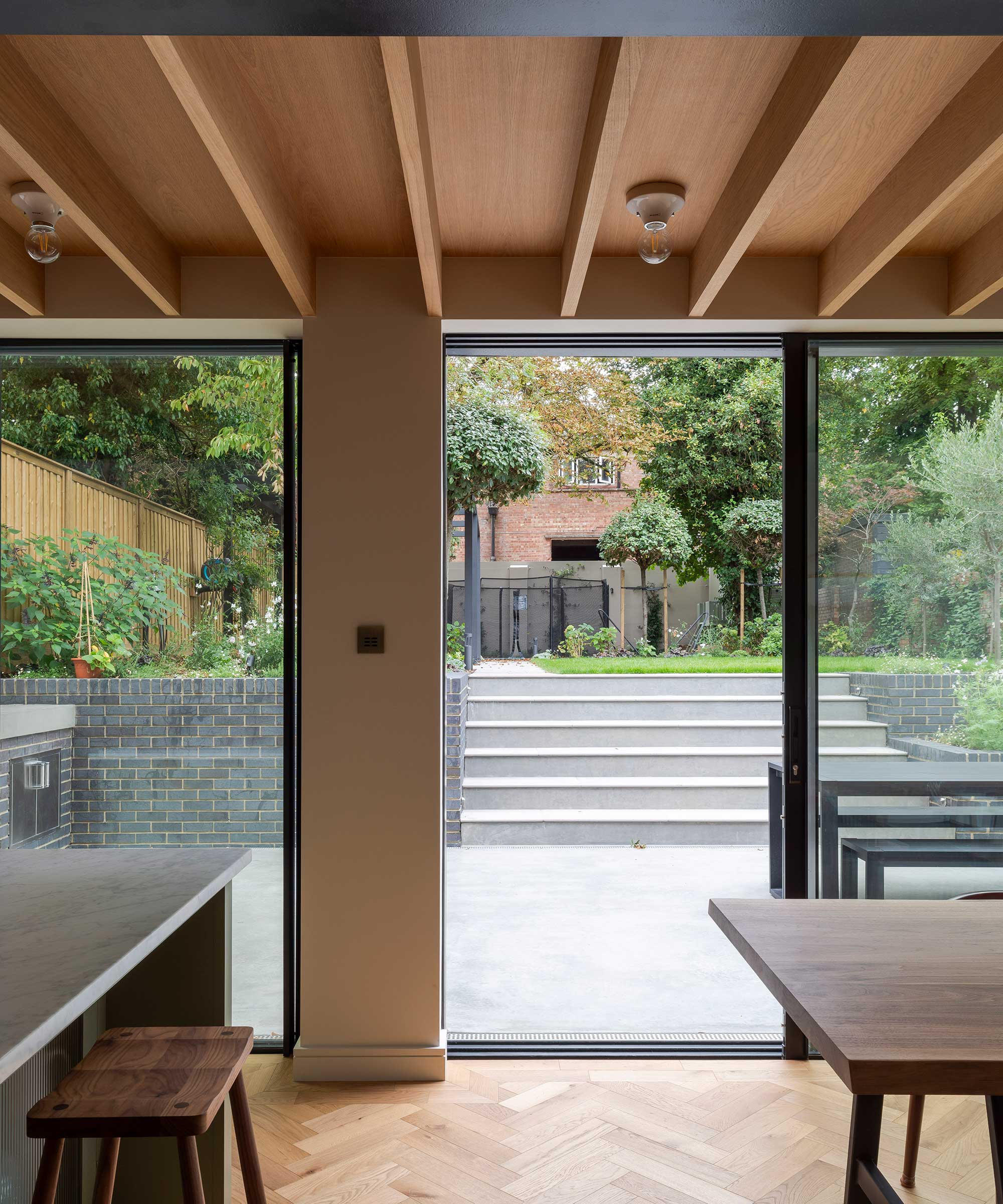
FAQs
Should you design your extension or your garden first?
All too often, gardens and landscaping in general, get left as a bit of an afterthought, meaning that either the budget has been used up by extension costs or that the outdoor spaces don't align with the new extension.
"Designing your garden at the same time ensures a seamless flow between your indoor and outdoor space," advises Marc Lane, design director from Landscapia. "It does not commit you to build both at the same time, but it will help you see opportunities and give you the potential to create a beautiful extension of your home both inside and outside."
Bear in mind that it isn't just rear extension ideas that should be designed to work in harmony with your garden, side and even front extensions also need to enhance your outside spaces.
Get the Homebuilding & Renovating Newsletter
Bring your dream home to life with expert advice, how to guides and design inspiration. Sign up for our newsletter and get two free tickets to a Homebuilding & Renovating Show near you.
Natasha was Homebuilding & Renovating’s Associate Content Editor and was a member of the Homebuilding team for over two decades. In her role on Homebuilding & Renovating she imparted her knowledge on a wide range of renovation topics, from window condensation to renovating bathrooms, to removing walls and adding an extension. She continues to write for Homebuilding on these topics, and more. An experienced journalist and renovation expert, she also writes for a number of other homes titles, including Homes & Gardens and Ideal Homes. Over the years Natasha has renovated and carried out a side extension to a Victorian terrace. She is currently living in the rural Edwardian cottage she renovated and extended on a largely DIY basis, living on site for the duration of the project.

